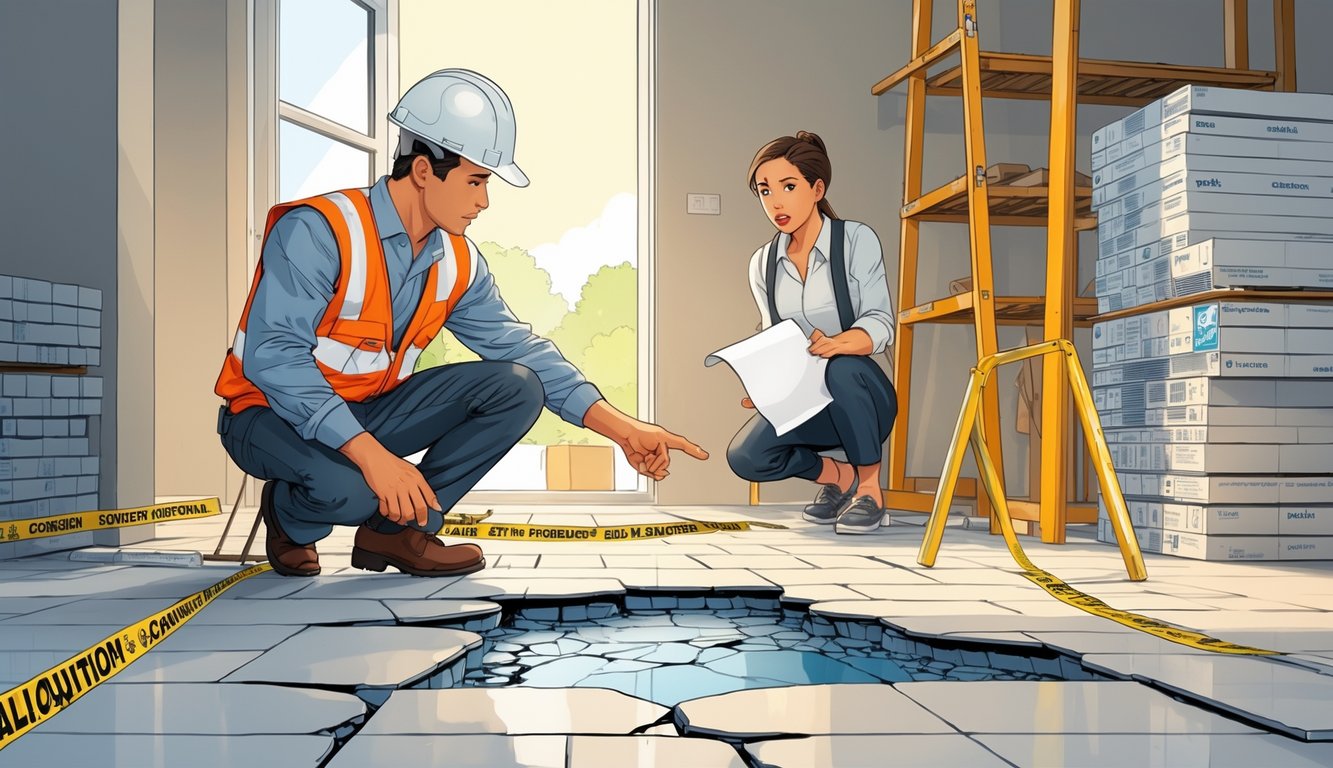
Best Practices for Managing Price Volatility
April last year, our tile supplier doubled prices in two weeks. Try explaining to a client that their $6 tile is now $14 per square foot. “Locked in” quotes? About as solid as a handshake from a poker player. I spend more time renegotiating than installing tile. Welcome to construction in 2024.
Strategies to Mitigate Sudden Price Changes
Nobody tells you the real trick: force suppliers to commit to price windows, in writing, with actual dates. Don’t accept “market volatility” language—they’ll wriggle out of anything. My last contract had a three-month price freeze and a pass-through escalation clause for the client, so if prices shot up, I wasn’t left holding the bag. Saw a stat from the Associated Builders and Contractors—nonresidential input prices jumped 0.6% in December. Not just headlines, it’s real.
I keep a spreadsheet—bid dates, supplier contacts, the works. If prices spike before material lands, I flag the order and push back, receipts stapled to the invoice. Vendor negotiation is soul-crushing but losing profit on a delay is worse. I ignore “standard terms,” underline everything in red: fixed pricing or I’m out. Not fancy, just trying to survive.
Frequently Asked Questions
Invoices don’t lie—tile costs don’t creep, they lurch. Usually right after you think you nailed the estimate. Logic? Out the window. What’s on the ledger never matches what’s actually glued under your future bath mat.
What factors contribute to the unexpected increase in tiling costs mentioned by contractors?
Everyone blames “supply chain,” but honestly, it’s always been a mess. Try sourcing imported porcelain after a shipping strike. Material costs jump because, I don’t know, tile colors vanish, patterns get discontinued halfway through a job. My receipts show installation methods alone can add 25%—those adhesive upgrades, man. National Tile Contractors Association’s 2024 survey backs me up.
Labor shortages? Oh, for sure. Suddenly a master tiler wants $65 an hour just because they do “large-format rectified edges.” That phrase alone inflates your bill.
And building codes—don’t get me started. Job quoted in January, and by June you need certified waterproofing membrane. There goes your margin, again.
Can you explain the real expenses associated with installing high-end tiles in a bathroom remodel?
People fixate on tile price per square foot, but that’s not even half the story. Underlayment, waterproofing (seriously, membrane failures mean full demo, not just a drip), edge trim, specialty grout, random “designer” drain covers.
I once got “artisan” tile that arrived cracked, and the replacement took two weeks plus a $180 delivery fee. The real surprise? Finishing details. Lisa from my old crew always said glass mosaics “break your knees and your spirit”—she charged me double for those. Worth it? Maybe.
What hidden fees should homeowners anticipate when budgeting for new tile installation?
Skip demo costs and you’ll regret it. Removing old tile, patching weird subfloors—no quote covers scraping ancient linoleum glue for three hours. Adam (friend, fellow masochist) says it’s the stuff nobody lists: disposal fees, travel charges if you live in the boonies, $17 tubes of color-matched caulk.
Permit fees are a joke. Historic district? I saw a $300 fee just for a preconstruction meeting about bathroom tile. Tool rental sneaks onto invoices too—saw blades and laser levels aren’t free just because they look cool.
How do labor and material costs break down for a complete tile shower installation project?
Last quote I saw? 40% materials, the rest labor. But materials aren’t just a spreadsheet line. Labor varies wildly—layout gets tricky, prep takes longer (hidden rot in drywall, anyone?).
Labor hours balloon if you pick hexagons or penny rounds. My neighbor’s shower? Certified installer charged 1.5x just because they wanted stacked grout lines “like in Tokyo hotels.” And drains? The drain pan install alone cost a hundred bucks more than the catalog suggested.
Why are contractors only now discussing the potential for higher pricing with premium tiling options?
Honestly? Blame TikTok and Pinterest. Suddenly everyone wants “handmade Spanish encaustic” or “large-format terrazzo,” and contractors panic when lead times hit three months. It’s not new, but nobody used to talk about it in the sales pitch.
Maybe they were scared of losing bids, but now? I see project managers (Dan’s been doing this since 2002) line-item every “anticipated manufacturer surcharge.” They’re tired of angry calls. Bald honesty. Sometimes it’s nice. Sometimes it’s terrifying.
What advice can experts give to ensure transparent pricing in tiling contracts?
Look, before you even start talking about tiles or grout colors or whatever, just—please—get a written scope. Like, a real breakdown. Not just “tile this bathroom.” I want to see every boring detail: prep, substrate, trims, thresholds, and, yes, the cleanup after. And—this is not optional—ask about overages. If their bid doesn’t have at least a 10% “just in case” materials buffer, I don’t know, maybe they’re hiding something? Or maybe they’re just optimistic. Either way, it’s weird.
Honestly, I once had this estimator (total spreadsheet nerd, in a good way) who told me to schedule a Zoom walkthrough with the contractor, phone in hand, pointing at every single surface. I thought it was overkill. Apparently not. “The big misses always hide behind the toilet,” he said, deadpan. He wasn’t wrong.
Also, if you don’t get change orders line-itemed in advance, brace yourself for those “surprise” upcharges. You’ll regret it. Why does it always cost more after they start? Is there some law of physics about grout dust and hidden fees?
If you actually find a contractor who doesn’t get shifty when you say the words “hidden fees,” hang onto them for dear life. Most of them? They disappear the minute the mosaic chips start flying. Oh, and if the estimate is all neat and round numbers—run. Those are the ones that blow up. Every. Single. Time.